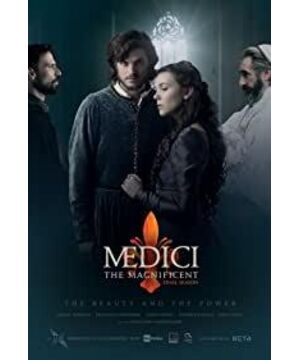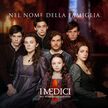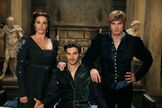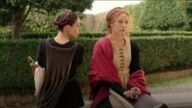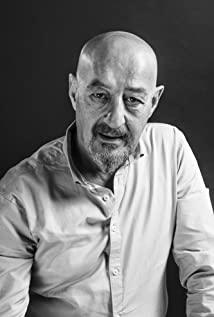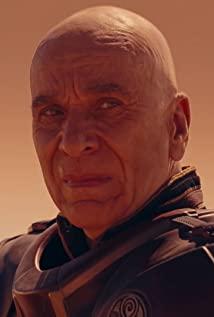The emerald family, the Medici family, had great power and influence in Europe from the 13th century to the 18th century. In the early 15th century, it began to grasp the actual ruling power of Florence, and in the early 18th century, it disintegrated due to extinction. During these three hundred years, the city's economy, politics and art have been pushed to the peak. The Medici family ignited the most important cultural and artistic revolution in Europe: the Renaissance, which made Florence the heart of the Renaissance, the artistic center of Europe, and later called it the "Godfather of the Renaissance". Come see the greatest artists, politicians and scientists of the era that the Medici family financed and sheltered: Masaccio, Lorenzo Ghiberti, Filippo Brunelleschi, Donatello, San Dero Botticelli, Leonardo da Vinci, Michelangelo Buonarroti, Rafael Sansi, Giorgio Vasari, Angelo Merici Da Caravaggio, Titian Vecellio, Niccolò Machiavelli, Galileo Galilei
With the patronage and patronage of the Medici family, these artists had the opportunity to reach their highest achievements. It is no exaggeration to say that without the Medici family, the Italian Renaissance would not be what we see today. Medici, the name of the Renaissance is engraved in the bones. "If we were to analyze the fascination that the Medici families of the fifteenth century, especially Cosimo the Elder and Lorenzo the Magnificent, had for Florence and all their contemporaries, we would see that this fascination was tied to They have few political talents, but many cultural leaders because of their age." -Jacob Burckhardt, "The Culture of the Italian Renaissance"
Among the many family leaders, three main figures wrote the legend of the Medici family:
Giovanni di Bicci de' Medici (1360 -1429), the founder, laid the wealth and political foundation of the family; the first person in the family to fund the arts, sponsor " Construction of the Gates of Heaven". When Giovanni died, the Medici family had become the richest man in Florence, laying a wealth and political foundation for the family.
Before his death, he repeatedly told his descendants to keep a low profile to avoid incurring hatred : "When you go to the city hall, you must always be vigilant. If you are not called, don't go there without authorization. Just do your duty, don't be high-profile and arrogant. Always stay away from the public. Sight."
Cosimo di Giovanni de' Medici (1389 -1464), the eldest son of Giovanni, not only expanded his father's wealth and political influence, but also enjoyed greater cultural and artistic acclaim. High prestige; sponsored the completion of the dome of the Cathedral of Santa Maria del Fiore; the first Florentine tyrant, the father of the Republic, the founder of the Medici political dynasty. Old Cosimo once said to a friend, "Maybe in fifty years, my family will be expelled , but the buildings I have built will stand." It is described as "Capo della Repubblica" (Capo della Repubblica).
The ruling corps formally passed a decree conferring the title Pater Parriae on him, and ordered the title to be inscribed on his tombstone. On the high altar of the church of San Lorenzo is the marble monument of Cosimo, the only one erected there. The inscription is as follows: Cosimo Medici is buried here at the age of 75 years, 3 months and 20 days , who was honored as the father of the country by public decree
Lorenzo de' Medici (1449-1492), grandson of Cosimo, succeeded Florentine tyrant, father of the country, and was called Magnificent Lorenzo by contemporary Florentines; Jean Medici The Chi family is truly united with the Renaissance movement and the historical achievements of Florence. The conspiracy to destroy the power of the Medici family has never stopped.
During this golden period of the Renaissance, known as "the most blissful," there were two heart-wrenching events that changed and advanced the history of the Medici family, bringing Florence into its darkest hour: one was " The Pazzi Conspiracy" , which completely changed Lorenzo's political maneuvering and transformed the posh Lorenzo from a moderate manager into a violent dictator; the first was the "fire of vanity" , which burned five years after his death and ended During the most prosperous period of the Renaissance, the artistic heritage of Lorenzo was reduced to ashes, and the heart of the Renaissance was transferred from Florence to Rome.
The Medici family history is a "Game of Thrones" to the pinnacle of power: conspiracies, assassinations, corruption, and wars all scramble for and maintain dominion over Florence. Under the creation and guidance of these three great family leaders, the Medici family was followed by: four Popes Leo X (the second son of Lorenzo the Magnificent, formerly known as Giovanni di Lorenzo de Medici Giovanni di Lorenzo de'Medici, 1475-1523) Clement VII (the illegitimate son of Giuliano the Magnificent brother of Lorenzo, formerly Giulio di Giuliano de' Medici, 1478-1534, rejected Henry VIII's demands for divorce from Catherine of Aragon) Pius IV (originally Giovanni Angelo de' Medici, 1499-1565) Leo XI (originally named Alessandro Ottaviano de' Medici, 1535-1605, the ninth shortest reign in Catholic history, only 27 days) two French queens Catherine de' Medici (1519-1589) Marie de' Medici (1573-1642, who promoted the birth of the Louvre in France) Seven Grand Dukes of Tuscany
Read the full renaissance "Game of Thrones": Three Hundred Years of Medici Rise and Fall
View more about Medici reviews


